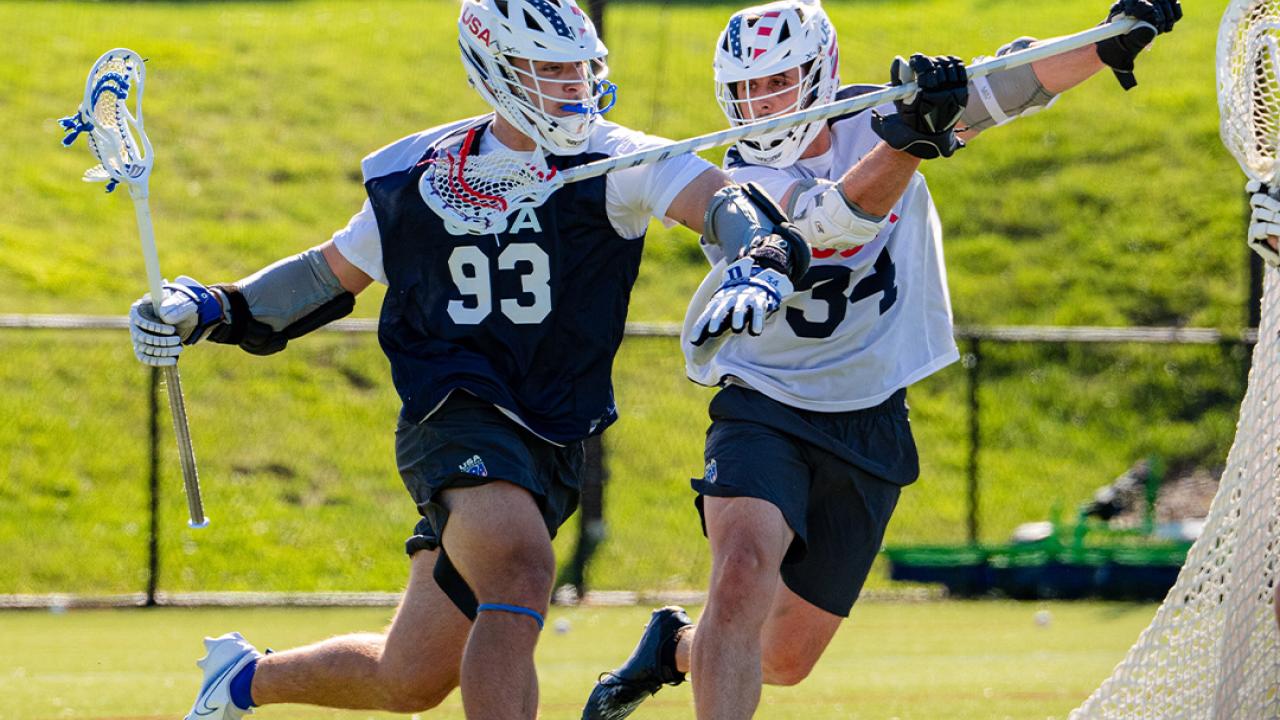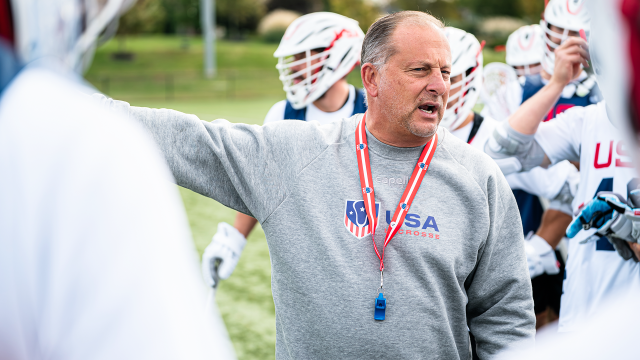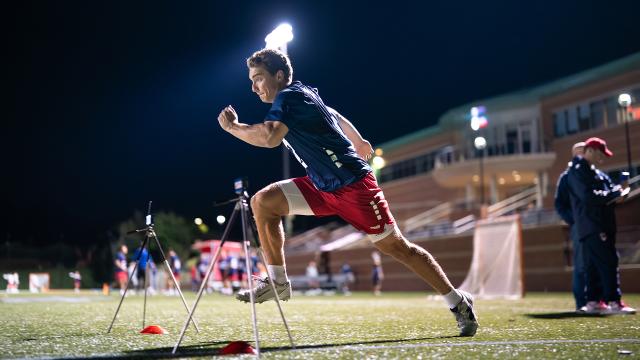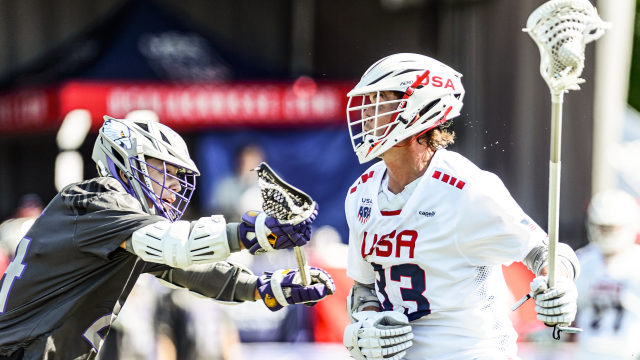
Game Ready: When (and How) to Pick Up a Long Pole
An offensive player’s stickwork is on full display. Some of the biggest stars in lacrosse — from the Gaits and Thompsons to Kayla Treanor and Charlotte North — have made names for themselves with flashy moves that need to be seen multiple times to be believed.
Defenders often don’t get that kind of glory. But stickwork is an essential piece to the game.
“Something I say to all my defenders, whether it is a high school or middle school team, is that your coach has to have confidence in you if it ends up in your stick,” said Liam Byrnes, the 2019 PLL Defensive Player of the Year who will suit up for the U.S. men’s national team at the World Lacrosse Men’s Championship in San Diego this July. “Even if we play defense, you’re still expected to run by a guy, get ground balls and catch and throw on the run.”
This advice is especially true of a long-stick midfielder, who often draws an opposing team’s top dodging threat from up top and sparks the transition game. It’s a position defenders may eye and one Byrnes transitioned to in sixth grade.
But, Byrnes cautions, it’s a process.
START SMALL
It’s tempting for players to want to rush into picking up a long pole — don’t.
“What I recommend for super-young kids who are just starting out and are smaller is to play with a short stick until you are comfortable handling the ball with the short stick and then you can graduate and move onto using the long pole,” Byrnes said.
Comfortable means feeling confident that you can cover someone, get the ball and run it up to attack yourself.
Starting with a short stick also allows players to build a foundation of footwork, positional defense and getting their hands on an opposing attacker. Byrnes, who still wields a short stick on occasion for the U.S. and the NLL’s Panther City Lacrosse Club (no poles in box), says this groundwork allows players to avoid bad habits and rely on the long stick to do the work.
SIZE RIGHT
The general rule of thumb is that the stick (head plus shaft) should not be taller than you. Byrnes says this can get tricky — and pricey — as kids grow.
“The issue that always comes up is how expensive it is to get new shafts and cut down a shaft,” he said. “A good way to go about it is to ask someone who is older than you on your club or elementary or middle school team if they have something to pass down to you.”
GET A GRIP
When new players start, they often put their hands together on a shaft to push someone out. It’s a way to get tripped up — literally — allowing the attackman to go toward the goal as the defender regains balance and attempts to catch up.
Instead, Byrnes recommends putting space between your hands.
“It gives you the most leverage to drive the guy away from the goal or turn him back behind the net,” Byrnes said. “Now, you have an equal amount of force between your top and bottom hand while maintaining balance.”
KNOW YOUR ROLE
An LSM's role varies on and off the ball. On the ball, even if you have the top matchup, don’t be a hero. “You are not out there to take the ball away every single time,” Byrnes said.
New long poles can struggle here, particularly if they got away with powering past offenses if they were bigger, stronger and faster at the middle school level. In high school and college, roster spots become more competitive, and the playing field levels.
“More often than not, if you don’t get the takeaway check, you are in a bad position,” Byrnes said. “The defense has to slide and rotate, and it puts a lot of stress on a defense.”
Think of lacrosse like basketball: Keep the ball carrier in front of you and force bad shots.
“You want to be playing team defense and focus on how to positionally get in front of and cover someone on the other team who is just as big, strong and fast as you are,” Byrnes said.
Off the ball, keep an eye out for slide packages and stay two steps ahead of the offense.
“Most defenders are so focused on being able to cover their guy,” Byrnes said. “The best defenders can recognize a play before it happens and make plays when the guy doesn’t have the ball. That comes from being comfortable back there and recognizing who is the hot guy, who should be the two slide and whether that is you or not.”
WALL BALL ROUTINE
-
25 right-handed
-
25 left-handed
-
25 catch right, throw left
-
25 catch left, throw right
Finish with some sidearm and under-handed throws. “When you pick up a ground ball, your stick is already down low,” Byrnes said. “It may be easier to make a sidearm or underhanded pass.”
INTENSITY MATTERS TOO. THROW HARD.
“If you’re just lobbing it off the wall, you’re not really getting anything out of it,” Byrnes said. “Take a good, hard step into the pass and really fire it off the wall.”
Working with a teammate is another option. Go to a field and place five balls two to three yards apart on the ground.
“The guy that I am working with stands over the ground ball with his stick,” Byrnes said. “I come through and try to get the ground ball. As I try to scoop it, he applies pressure — a light check on the stick or to the gloves. I scoop it and do a 180 and come back the other way.”
Repeat five times and switch.
Beth Ann Mayer
Beth Ann Mayer is a Long Island-based writer. She joined USA Lacrosse in 2022 after freelancing for Inside Lacrosse for five years. She first began covering the game as a student at Syracuse. When she's not writing, you can find her wrangling her husband, two children and surplus of pets.

Categories
Related Articles




